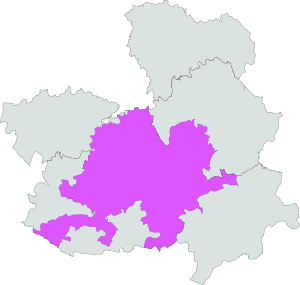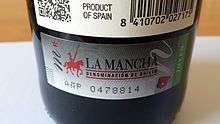La Mancha (DO)


La Mancha is a Spanish Denominación de Origen (DO) for wines, with over 190,000 ha planted to vines, and is the largest continuous vine-growing area in the world. It is located in the autonomous region of Castile-La Mancha in central Spain and includes 182 municipalities: 12 in the province of Albacete, 58 in Ciudad Real, 66 in Cuenca and 46 in Toledo. 22,000 grape-growers and over 300 wineries (bodegas) are registered with the DO, which was formally created in 1976.
History
The first written documentation on viticulture in the region dates from the 12th century, though it is generally believed that vines were introduced by the ancient Romans as in other regions of the Iberian peninsula. Wine production took off in the 1940s due to the setting up of numerous cooperatives in the region. Viticulture is the economic mainstay of many of the municipalities that form part of the DO.
Climate
The climate is continental (long hot summers and cold winters) and ranges from extremes of -15°C in winter to 45°C in summer. Drought is also common due to the micro-climate of La Mancha which prevents moisture bearing winds from crossing it; mean annual rainfall is about 300 to 400 mm. On the other hand, the vines are exposed to about 3000 hours of sunlight per annum.
Soil
The soil structure is very homogenous throughout the region and tends to be flat. It is formed of reddish-brown sandy clay, poor in organic material, and rich in lime and chalk. Strata of lime are common and are often broken to allow the roots of the vines to pass through. The land rises constantly from north to south, from 480 m above sea level in Aranjuez, to 700 m in La Mancha in the south.
Grape varieties
The following are the authorised grape varieties:
Red: Cencibel (also known as Tempranillo), Garnacha, Moravia, Cabernet Sauvignon, Merlot and Syrah
White: Airén, Macabeo (also known as Viura), Chardonnay and Sauvignon blanc